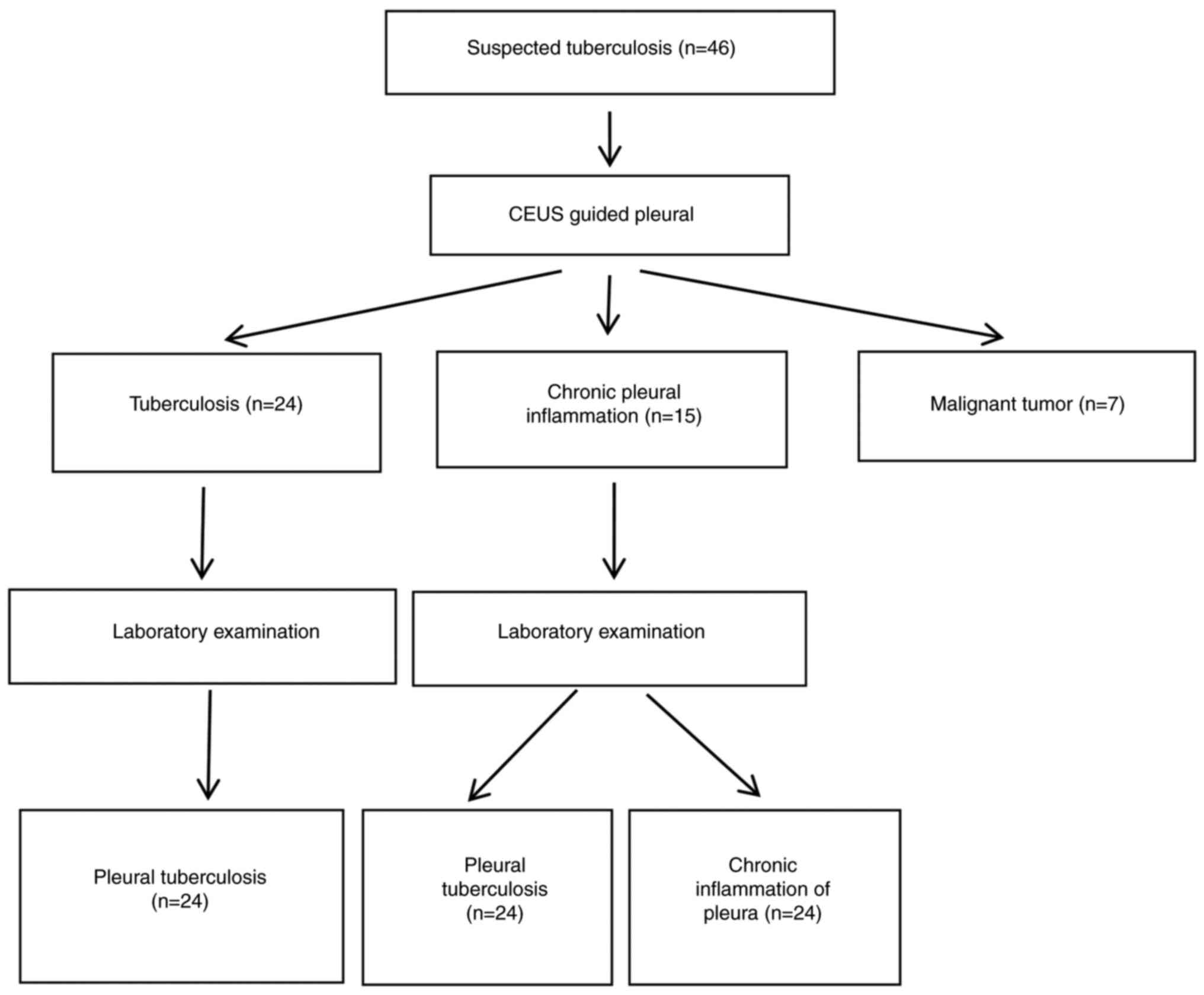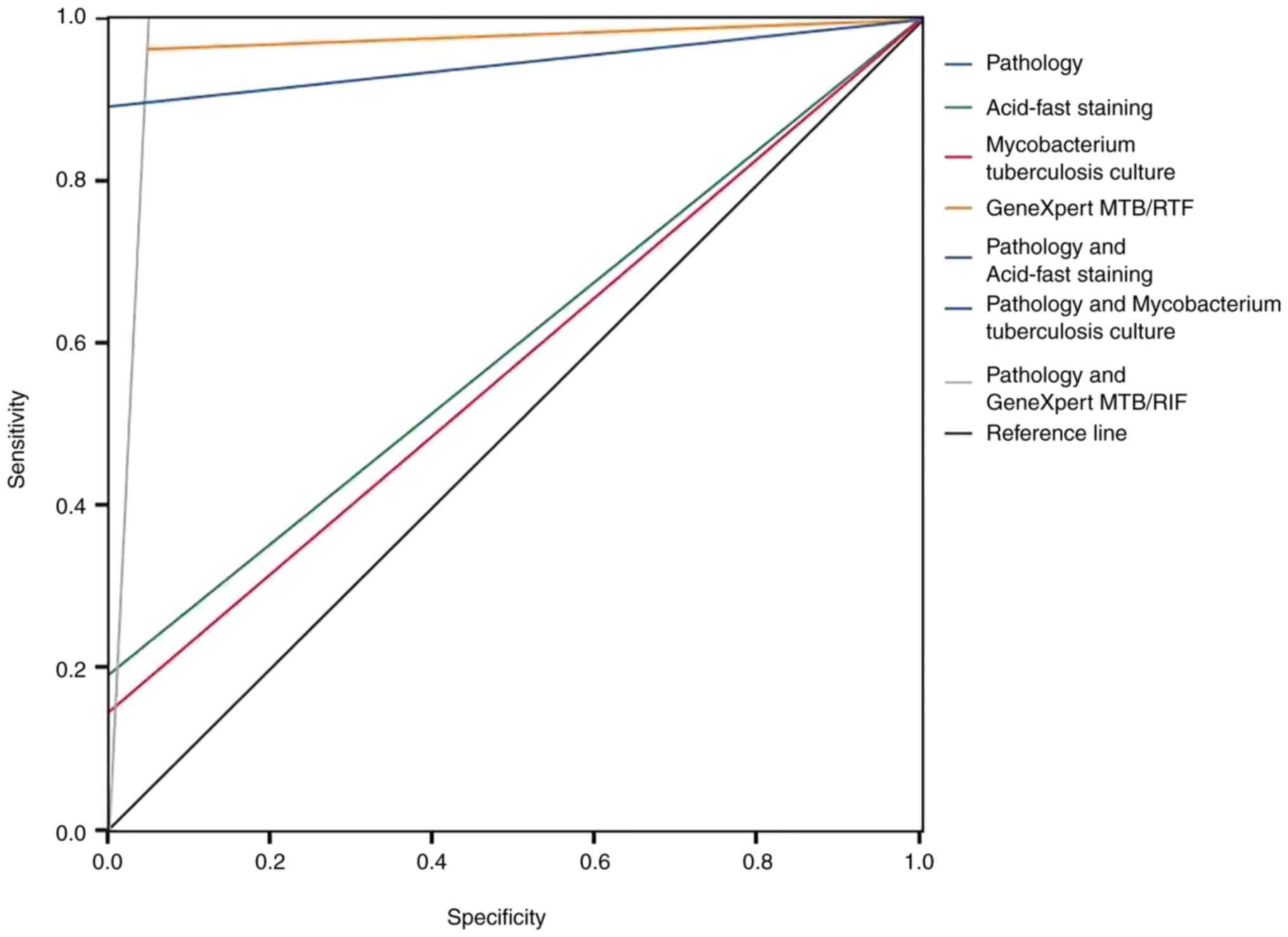Value of ultrasound‑guided puncture combined with GeneXpert MTB/RIF technology in the diagnosis of pleural tuberculosis
- Authors:
- Published online on: March 4, 2025 https://doi.org/10.3892/etm.2025.12837
- Article Number: 87
-
Copyright: © Qin et al. This is an open access article distributed under the terms of Creative Commons Attribution License.
Metrics:
Total
Views: 0 (Spandidos Publications: | PMC Statistics:
)
Total PDF Downloads: 0 (Spandidos Publications: | PMC Statistics:
)
Abstract
The aim of the present study was to analyze the pathological and laboratory findings of pleural lesions post ultrasound‑guided biopsy and to assess the diagnostic utility of percutaneous ultrasound‑guided puncture combined with GeneXpert Mycobacterium tuberculosis (MTB)/resistance to rifampin (RIF) in pleural tuberculosis (TB) diagnosis. A retrospective analysis was conducted on 46 patients who underwent ultrasound‑guided biopsy at the Shandong Public Health Clinical Center (Shandong Chest Hospital) between April 2018 and April 2021. Of these, 27 patients were diagnosed with pleural TB, while 19 were confirmed to have non‑pleural TB. Preoperative examinations were negative for all patients. Under ultrasound guidance, tissue samples were obtained through puncture for subsequent pathological and laboratory examination. All collected samples were subjected to acid fast staining, M. tuberculosis culture and GeneXpert MTB/RIF (Cepheid). The sensitivity, specificity and area under curve (AUC) value were compared across methods. Rifampicin drug susceptibility was detected using the proportional method and compared with results obtained from GeneXpert MTB/RIF. The sensitivity and specificity of acid‑fast staining, M. tuberculosis culture and GeneXpert MTB/RIF in diagnosing pleural TB were 18.52 and 100.00%, 14.81 and 100.00, 96.30 and 94.74%, respectively. Consistency analysis demonstrated that the GeneXpert MTB/RIF technique exhibited good agreement (κ=0.91), whereas the agreement for acid fast staining (κ=0.16) and M. tuberculosis culture (κ=0.13) was poor. Data analysis was performed by combining the results of the three detection methods with pathological findings. The diagnostic value for pleural TB was highest for GeneXpert MTB/RIF technology combined with pathology (AUC value=0.97), followed by M. tuberculosis culture combined with pathology (AUC value=0.94) and acid‑fast staining combined with pathology (AUC value=0.94). No surgical complications were observed. Of the 27 samples, 4 tested positive using the M. tuberculosis culture method. Rifampicin resistance was detected from the bacterial colonies through the proportional method, with results consistent with those obtained from the GeneXpert MTB/RIF method. Ultrasound‑guided percutaneous biopsy is considered a safe and effective approach for diagnosing pleural TB, Its sensitivity is much higher than that of pleural effusion, Moreover, there is currently limited research on ultrasound‑guided pleural biopsy combined with laboratory testing worldwide. Ultrasound‑guided puncture combined with GeneXpert MTB/RIF technology is of significant value in the diagnosis of pleural TB and in determining rifampicin resistance.














